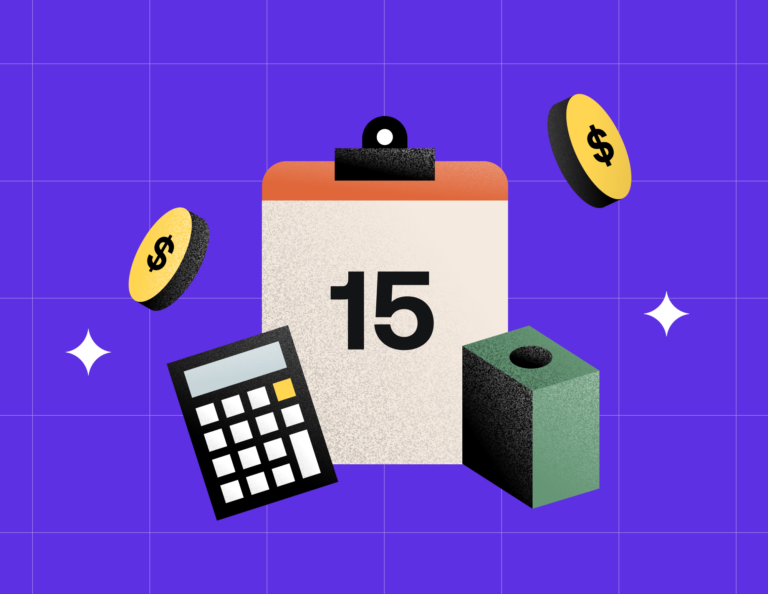“Ashlyn, do you love accounting?” My freelance writing mentor blinked her big blue eyes at me as I considered leaving my job as a corporate publicist. I raised my eyebrows in response. “Well then,” she smiled at my wordless answer. “That’s how some people think about writing. They’ll rather pay to have someone do it.”
Lightbulb moment.
Jenn wasn’t finished. “There are THIS many people (she stretched her arms out wide as a yardstick) that think they can write. This many people (she scooted her hands in closer) that actually can write. This many people (four-inch wide hands) who turn work around on a deadline, and this (fingers spread one inch across), this is how many people are a delight to work with.”
The magic to making money as a writer? Be in that last flock of writers and you’re golden.
Pricing for solopreneur writers — copywriters, marketing strategy writers, editorial journalists, and bloggers — isn’t something that floods creative industry airwaves. But creative pricing magnates like Kristen Kaplan and Shanna Skidmore (look ‘em up) shattered my fear of charging what I’m worth as a writer. I’m proud of my prices, feisty about ‘em on a good day, protective of them at all measures — after all, this is how I earn a living.

After a decade in the industry, I’ve learned 6 actionable things you can do to firm-up your pricing as a writer.
1. Don’t look to see how other journalists, copywriters, etc. price.
For good reason: you’ll nix a few hours off your life combing the internet for comparable pricing. Truth? Most editorial stories have a set rate. Copywriting pricing tends to be client-dependent. A better bet? Find your number, and figure any opportunity into your hourly rate. A writer splits her time is split between drafting and marketing, which means querying and pitching for your next byline or communicating your services.
Take your monthly cost of goods (which, us lucky-duck writers tend have a fairly low COG in comparison to other creatives), and add your desired monthly salary. Divide that by four weeks, then hours you’ll be working billable.
For example, if your COG and salary total is $6K a month, divide that by 4, then divide that by 20, assuming half of your 40 hour work week will be spent researching, marketing, and running admin tasks. Your hourly rate? A cool $75. Don’t take less. Want a free tool to find this number for yourself? Click here to download.
2. Write a business plan. Have sales goals. Hit them.
The word “sales” veers toward terrifying for most journalists; It strips the dignity right out of the sooth-saying artistry that attracts writers! But … have some sales goals. It can be as simple as knowing you need no less than eight clients a month to keep the lights on. Market to hit your goal, hit it, write well, rest well. Repeat.
3. Bank on freelance writing tools like Skyword.
Content marketing’s soaring, and guess what: someone’s gotta draft and swindle all that copywriting. Plenty of recruiters that want to match talented writers with bespoke copy crafting for big brands. Can I be honest? I cataloged glossy magazines under my bed my entire high-school career. We’re talking spines flush and alphabetical order: I crave magazines. But consider joining a program like Skyword, where you get paid to draft non-editorial content for companies like MasterCard, New Balance, etc.). It’s borderline passive income in that I only have to market my services once to the recruiting team!
4. Yes, you need a contract.
Or else you’ll end up being asked to source imagery for a random item you referenced in an editorial story … long story. Brush up on Six-Figure Freelancer by Kelly-James Enger, the holy grail of freelance writing, for tips.
5. Bookkeeping software can work for you.
Create a template flow, and send clients through your software as often as possible: this keeps bookkeeping tighter than the loose check-flurry publications mail your way!
6. Consider the pricing implications of the word “freelancer.”
As much as I love the phrase, I conjure romanticized visions of a Parisian cafe where AP French rolls off my tongue and I’m elegantly rapping away on my sleek Macbook when I think of the words “freelance writer.” It’s magical. But personally, I shy away from the word freelancer. I have processes, file as an LLC, and actively seek client work. For me, commanding respect for my pricing, my studies, my years of industry experience, and numerous bylines is bolstered when I call myself a small business owner.
Bottom line? Charge what you’re worth, but remember something I can’t shake that Kristen Kaplan noted on Periscope one time: if you’re going to charge BMW or Apple prices, give a BMW or Apple experience. I’d study journalism all over again, but looking back, I’d tell 20-year-old me to stay calm, steward your craft, and stay nimble: Turns out, if you’ve got media industry training and a honed writer’s voice, it shapes out that there’s work to be done, and a buck to be made.
Learn more and grow your business with HoneyBook’s all-in-one crm for freelancers.



